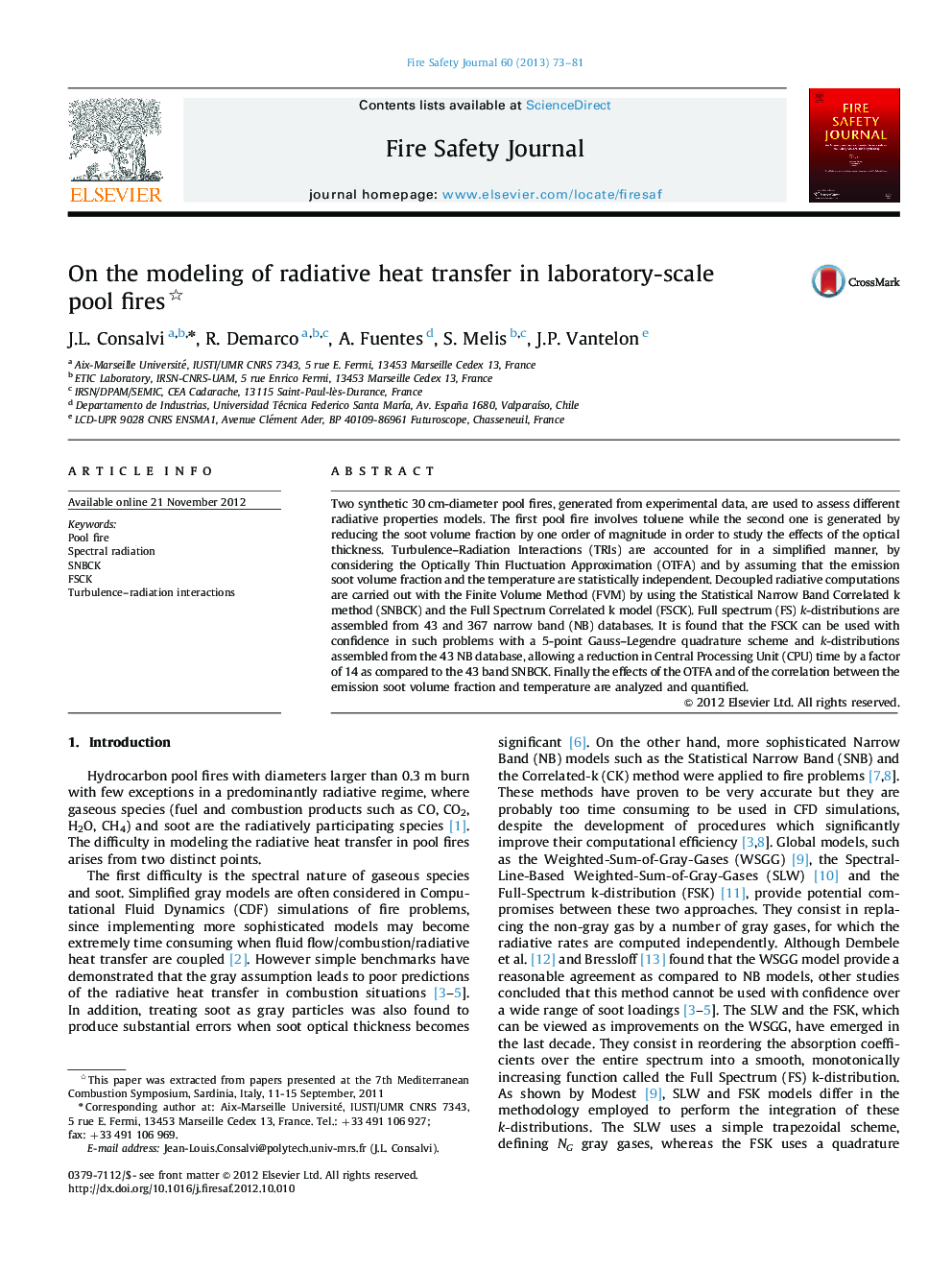| Article ID | Journal | Published Year | Pages | File Type |
|---|---|---|---|---|
| 270006 | Fire Safety Journal | 2013 | 9 Pages |
Two synthetic 30 cm-diameter pool fires, generated from experimental data, are used to assess different radiative properties models. The first pool fire involves toluene while the second one is generated by reducing the soot volume fraction by one order of magnitude in order to study the effects of the optical thickness. Turbulence–Radiation Interactions (TRIs) are accounted for in a simplified manner, by considering the Optically Thin Fluctuation Approximation (OTFA) and by assuming that the emission soot volume fraction and the temperature are statistically independent. Decoupled radiative computations are carried out with the Finite Volume Method (FVM) by using the Statistical Narrow Band Correlated k method (SNBCK) and the Full Spectrum Correlated k model (FSCK). Full spectrum (FS) k-distributions are assembled from 43 and 367 narrow band (NB) databases. It is found that the FSCK can be used with confidence in such problems with a 5-point Gauss–Legendre quadrature scheme and k-distributions assembled from the 43 NB database, allowing a reduction in Central Processing Unit (CPU) time by a factor of 14 as compared to the 43 band SNBCK. Finally the effects of the OTFA and of the correlation between the emission soot volume fraction and temperature are analyzed and quantified.
► To assess the validity of the FSCK method in the simulation of pool fires. ► To provide ways to improve its computational efficiency. ► To assess the validity of treating soot as gray particles. ► To quantify and analyze the influence of the OTFA. ► To quantify the influence of the soot volume fraction–temperature correlation.
